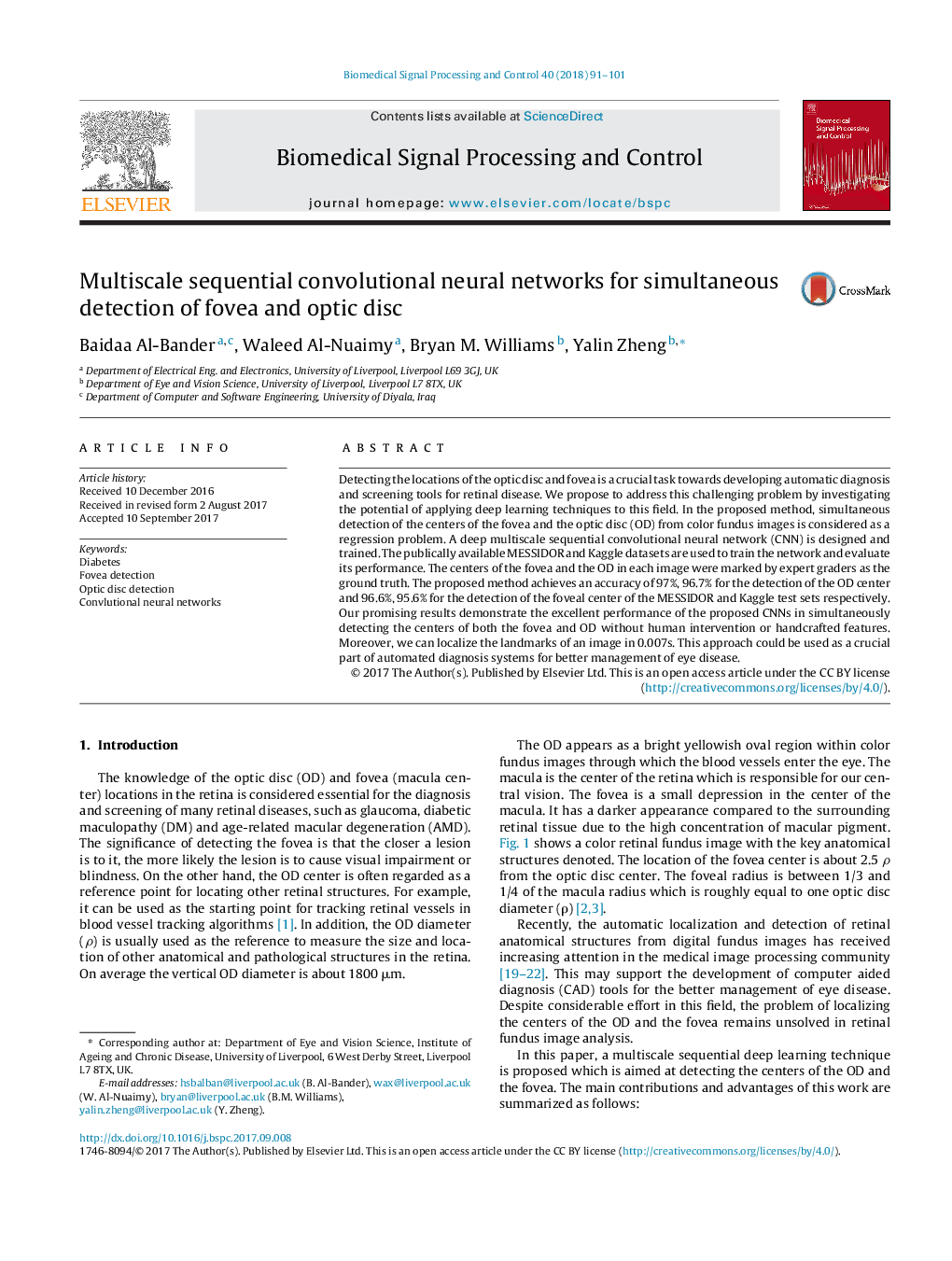| Article ID | Journal | Published Year | Pages | File Type |
|---|---|---|---|---|
| 4973380 | Biomedical Signal Processing and Control | 2018 | 11 Pages |
â¢We present a fast new multiscale deep learning approach to object localisation.â¢We locate automatically the fovea and optic disc simultaneously in fundus images.â¢Our method is fully automatic, needing no prior processing or user intervention.â¢We show excellent results using patient specfic measure for comparison across datasets.â¢Our method is robust to image quality and we show good generalisation to new data.
Detecting the locations of the optic disc and fovea is a crucial task towards developing automatic diagnosis and screening tools for retinal disease. We propose to address this challenging problem by investigating the potential of applying deep learning techniques to this field. In the proposed method, simultaneous detection of the centers of the fovea and the optic disc (OD) from color fundus images is considered as a regression problem. A deep multiscale sequential convolutional neural network (CNN) is designed and trained. The publically available MESSIDOR and Kaggle datasets are used to train the network and evaluate its performance. The centers of the fovea and the OD in each image were marked by expert graders as the ground truth. The proposed method achieves an accuracy of 97%, 96.7% for the detection of the OD center and 96.6%, 95.6% for the detection of the foveal center of the MESSIDOR and Kaggle test sets respectively. Our promising results demonstrate the excellent performance of the proposed CNNs in simultaneously detecting the centers of both the fovea and OD without human intervention or handcrafted features. Moreover, we can localize the landmarks of an image in 0.007s. This approach could be used as a crucial part of automated diagnosis systems for better management of eye disease.
